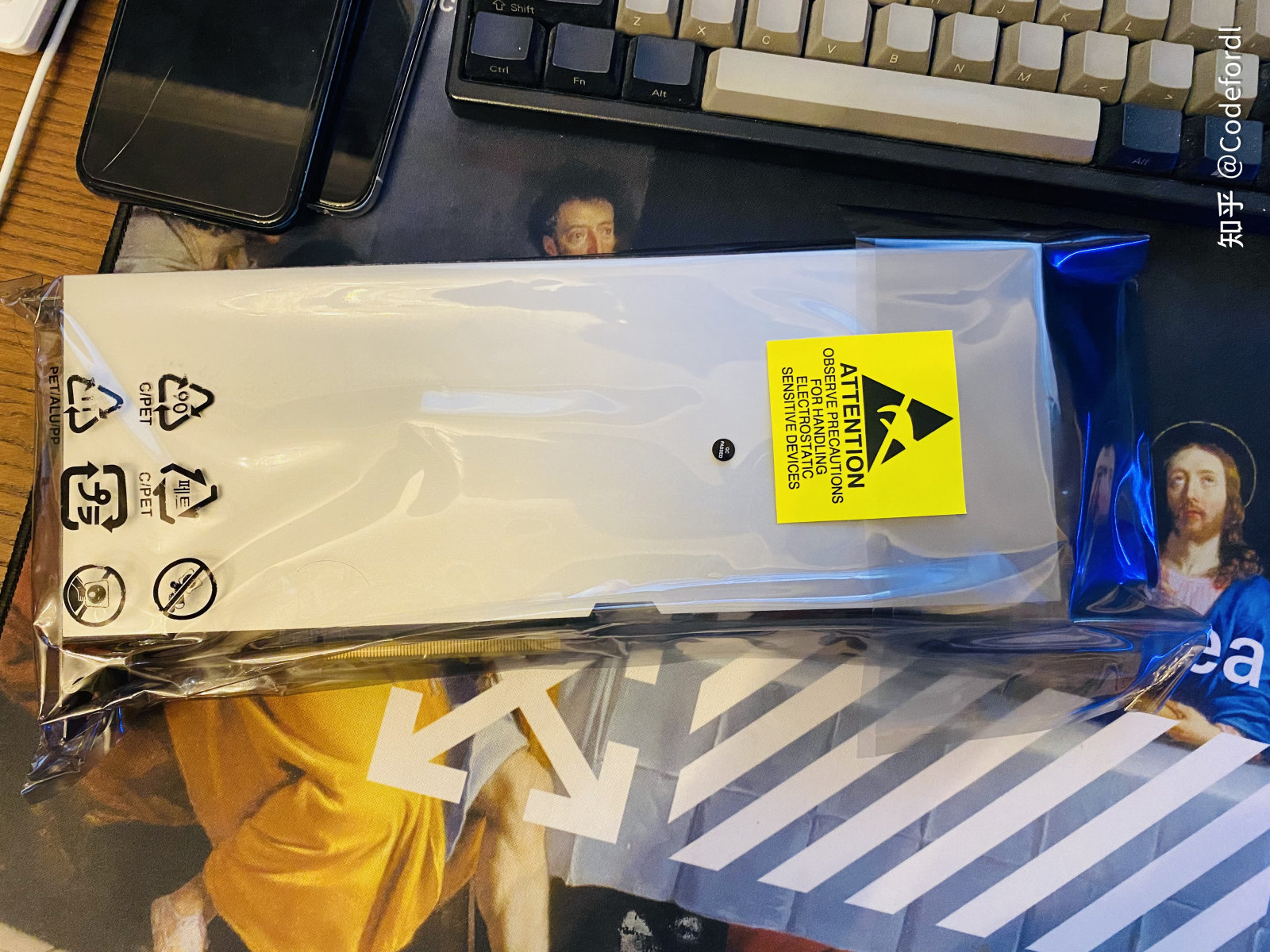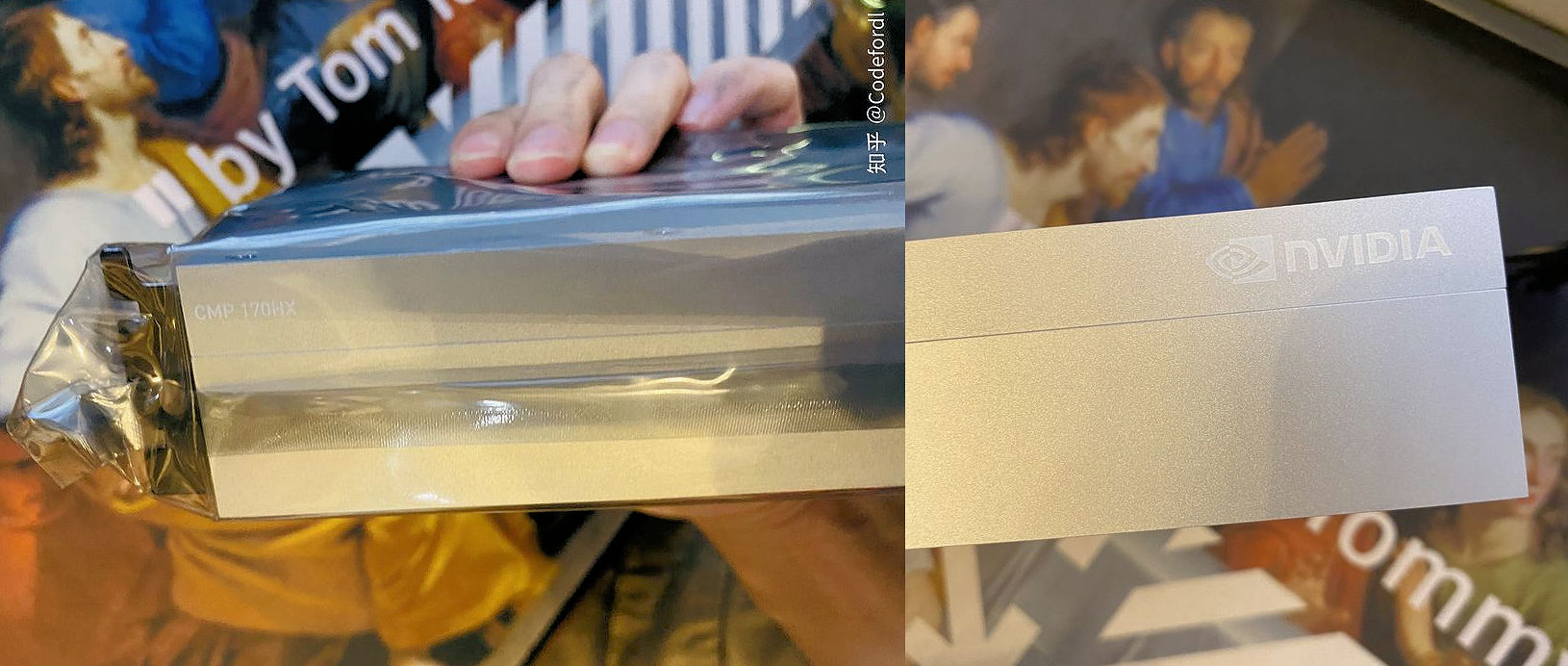Nvidia's CMP170HX in the Wild With 164 MHps of Ethereum Mining Performance
Based on the A100 accelerator
Reports on Nvidia aiming to repurpose its A100 compute accelerator as a Crypto Mining Processor accelerator surfaced as early as March of this year. The intermediate radio silence has now been broken, with purported photographs and screenshots of a repurposed A100 surfacing as a rebranded CMP 170HX. There's plenty to chew over, but as this isn't an officially announced product, take the details with a bit of salt.




While initial reports pointed towards a CMP 220HX branding with performance in the range of 215 MH/s for Ethereum mining, the final result delivered by the CMP 170HX is slightly less impressive, with the tested card delivering around 165 MH/s in a 250W envelope. It is still extremely impressive compared to the CMP 50HX accelerator that falls in the same 250 W envelope, though; that card can only output 45 MH/s — less than a third of the CMP 170HX's performance. Thus, Nvidia seems to still have some headroom for an eventual 220HX release - at least judging from these specifications on offer in the 170HX.
The CMP 170HX is likely made via defective, harvested chips that didn't make it into the company's A100 - a beast of a card with 40 or 80 GB of HBM2e memory and packing a grand total of 6,980 enabled CUDA cores (84% of the in-silicon CUDA cores in the GA100 chip design).
Being a cryptocurrency mining-oriented card, Nvidia cut everything that wasn't strictly necessary for typical mining workloads. Besides the aforementioned headless design, the CMP170HX features only 4,480 CUDA cores (54% of GA100's design cores). Its HBM2e memory has been reduced to the bare minimum for Ethereum mining, with 8 GB HMB2e across two 4 GB stacks, delivering a maximum of 1,493 GB/s of bandwidth across its 4096-bit bus. Nvidia even slaughtered the PCIe bus on this card - the link is limited to PCIe 1.1 x4 (!), thus offering only 250 MB/s bandwidth across the PCIe bus (for reference, modern graphics cards with PCIe 4.0 x16 achieve 32 GB/s across the bus). However, mining workloads aren't dependant on the bus speed for performance - while most other applications users might want to use these cards for (like, say, actual ML and typical HPC workloads) will thus be rendered virtually impossible to process at a high enough throughput to make it worthwhile.
These alterations allow Nvidia to sell this card solely for cryptocurrency mining, at a premium, while keeping institutions, data centers and even tech-savy prosumers focused on the company's A-series offerings, also at a premium.



GPU-Z screenshots of the card, which has "170hx" added to cover whatever name has been assigned to the card in the identifier string, identify it with the 20C2 Device ID. The card was running on Nvidia's 471.41 driver version and core clocks are set at an 1140 MHz base and 1410 MHz boost. This is likely in the sweet spot for performance and power consumption for this particular accelerator since memory speeds, not core speeds, are the defining factor in cryptocurrency mining performance. This also enables a fully passive design since in-memory processing is less heat-intensive than in-core processing.
CMP is Nvidia's crypto-specific accelerator lineup, built to take some of the strain off the company's gaming-oriented GeForce lineup by streamlining the cards' design and extracting the bits and pieces that aren't required for crypto mining operations, such as the display outputs. All of Nvidia's CMP lineup, including the CMP 30HX, 40HX, 50HX and 90HX (with relative performance scaling with the product numerals), are headless.
Now there's one more tool to attract miners towards these graphics cards instead of our general GeForce graphics cards. Even with Nvidia's Lite Hash Rate performance limitation, these cards still present interesting venues for mining income. However, don't expect these CMP 170HX to be scooped up in droves by mainstream miners: While its pricing isn't currently known, the GA100 die inside is expensive for Nvidia to produce. However, it will definitely be an appealing solution to larger-scale mining operations — it does qualify as one of the most efficient and higher-performing mining solutions in a single card currently available in the market.
Get Tom's Hardware's best news and in-depth reviews, straight to your inbox.

Francisco Pires is a freelance news writer for Tom's Hardware with a soft side for quantum computing.
-
bollwerk Miners aren't going to buy these over standard video cards if the price per hash rate isn't competitive.Reply -
Faktorek These cards are pointless. They have 0 like ZERO re-sell value. They are like 6 months to late as they will hardly be profitable as ETH goes PoS soon. It's much better option to buy the ETH directly for the super much to high price of this card.Reply -
Im__A__Blimp Unless the CMP cards cost 50% of their GeForce counterparts, NVidia can go fuсk 'emselves. They have no resale value, and only 3 month warranty because of failure rates. Ya. Not happening. No miner is going to buy that shіtReply -
LolaGT No miner will get near that thing unless it is a lot cheaper than regular GPUs in HR per watt.Reply
It is worthless for anything but mining, meaning worth a lot less as an investment. -
ezst036 Replybollwerk said:Miners aren't going to buy these over standard video cards if the price per hash rate isn't competitive.
When it becomes retail available miners will absolutely buy it or they won't mine. 100% of a card you can buy right here, right now shipped to you in two days, is better than 70% of a card that's out of stock and been out of stock for 6 or more months and will remain that way for who knows how long. -
JWNoctis As far as the chips themselves went, selling them off inside mining cards is certainly going to be more profitable than selling them off as keychains and paperweights sealed in acrylite.Reply
Would've loved to have one of those - If only they still did that. -
Stesmi Replythe link is limited to PCIe 1.1 x4 (!), thus offering only 250 MB/s bandwidth across the PCIe bus
PCIe 1.1 x1 gives 250MB/s, but x4 gives 1GB/s. Not saying that's a lot or anything, but that's a typo.
Either it's PCIe 1.1 x1 with 250MB/s, or it's PCIe 1.1 x4 with 1GB/s. -
JTWrenn We should not be making better tech for mining. We should be changing crypto to low power use versions. It is ridiculous to mine while our planet is on fire and flooded at the same damn time.Reply -
-Fran- Ah, the same Company that says "we love gamers" left right and center is using their dies for mining cards instead of more gaming cards. Right...Reply
I don't understand why people believes nVidia cares about gamers one bit. Not that Companies actually care, mind you, but nVidia is not even hiding the knife behind their back when reaching out for a handshake; they're going full frontal assault to your wallets and you're allowing it. It's hilarious.
Regards.